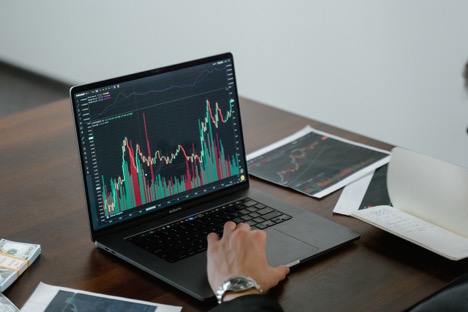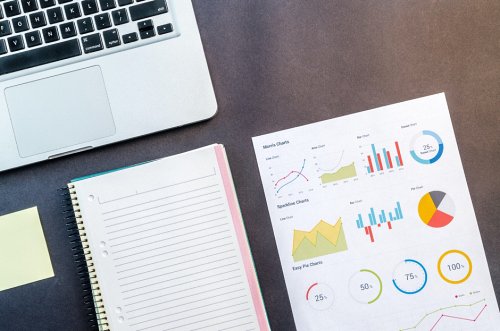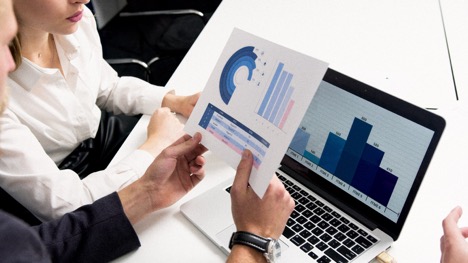Statistics involves using appropriate techniques for collecting data, learning from it, applying proper analysis methods, and presenting the results effectively. The discoveries and predictions made from the collected data, observable trends, and tendencies are also implied from the statistical techniques and help make findings more accurate.
In the corporate sector, it becomes easy for data scientists to make tedious-looking data sets and their trends look minimalist using statistical analysis techniques and tools. It helps by eliminating unwanted information from the data and creating a humongous-looking task more composed by organizing many inputs.
In this article, we will cover almost everything that you need to know about statistical data analysis and the tools that help in performing the analysis effectively. So, if you are a data science student or anyone getting started with statistical data analysis, add accuracy to your verdicts and predict data trends appropriately, read this article till the end; we have got you covered!
Statistical Data Analysis
Statistical Data Analysis refers to the methodology applied for performing all sorts of statistical operations. The procedure uses a quantitative approach to collect the data, organize it, and use statistical measures to predict outcomes and trends.
The data can be observational data or the one obtained from surveys. After the data is collected, this approach applies different statistical measures to predict the outcomes and trends in the data. There are a number of software available in the market for performing statistical data analysis, including SPSS (Statistical Package for the Social Sciences), Stat soft, SAS (Statistical Analysis System), etc.
What are the Types of Statistical Data Analysis?
There are two types of Statistical data analysis under statistical data analysis processes.
i. Descriptive Statistics
Descriptive data analysis refers to the type of data analysis used to visualize, summarize and present data in a way that adds more meaning to it. This is best designated by measures of central tendency such as mean, standard deviation, variance, median, and mode.
ii. Inferential Statistics
Inferential statistics is the type of statistical measure that refers to drawing conclusions from the given data in the situation put through some random variation. It is done by inferring from alternative and null hypotheses. Moreover, regression analysis probability distribution and correlation testing also fall into this category.
11 Tools to perform Statistical Data Analysis
During any research, the most tiring task is to analyze large volumes of data. To make this tedious task easy and smooth, a couple of software are used to analyze statistical data and reach a conclusion quickly. Following are some of the tools that are used for statistical data analysis.
1. MATLAB
MATLAB is a programming language and a platform that provides tools for data analysis, including built-in functions and other advanced features. The data can be diverse and from various domains such as logistics and transportation, weather forecast, finance, and E-commerce.
MATLAB can quickly analyze scientific data using preprocessing functionalities and create interactive visualizations to identify data trends and reach a satisfactory conclusion. This tool also solves the problem of writing widespread documentation that can be further extended to big data and analytics. Following are the key functionalities and services that MATLAB provides to its users for statistical data analysis:
Data Organization:
Data organization involves organizing data according to their types. It allows users to write thousands of programs containing different algorithms spanning data types of various domains. It also lets the user interact visually with the data by utilizing prebuilt functions and creating corresponding code from the visualizations using new charts and graphs.
Data Analysis and Expansion from fewer data:
Using this tool, a user can efficiently perform data labelling and iterative tasks. The user defines the code, and MATLAB functionalities are meant to reproduce the code needed for iterative purposes automatically.
Prebuilt functions in MATLAB let users identify signal outliers, detect missing data and remove noise from the data. The Live Editors allow users to interact easily and in a more cooperative framework.
parfor loops and multiprocessor hardware help to quicken parallel analysis with almost no code changes. To deploy proper algorithms, the performance of GPU is enhanced by using GPU arrays.
Results:
The analysis and results obtained from MATLAB can be packaged into software components that are shareable and freely available to people. These include executable files, .NET assemblies, C/C++ libraries, Python packages, and Java libraries. It also lets users automatically translate their code meant for embedded targets into MATLAB code and then to C and C++ code. Users can also transcribe their work using MATLAB Live Editor and export the findings in reports in PDF, Microsoft Word, Latex, and HTML format.
2. Statistical Analysis Software (SAS)
Statistical Analysis Software is used for advanced analyses and enables the user to either to use a graphical user interface or script to perform analysis on the provided data.
SAS is highly efficient and stable as it offers multithreaded procedures that allow the users to perform multiple tasks at once. The software helps Data Scientists, Data Analysts, and researchers to carry out advanced research easily and find out the trends adequately. The user can create visualizations such as charts and graphs of their own using this analytical tool.
3. GraphPad Prism
GraphPad Prism is a tool primarily meant for biological statistical data; however, you can use it for other domains as well due to its diversity. SAS also provides options to the user to either opt for scripting or go with the Graphical User Interface to carry out complex analyses.
GraphPad helps to enter quantitative data quickly and create attractive and interactive graphs to present data. Prism contains libraries to perform regression analysis, t-tests, and binary logistics analysis.
4. Microsoft Power BI
Microsoft Power BI (business intelligence) suite contains valuable tools and services that allow business tycoons to gain a sound understanding of business data incorporation of solid data analytics and creative visualizations. It will enable data not to be rested in databases that can no longer be used.
Power BI supports various data sources such as Databases, Flat Files, Blank Query, OData Feed, AZURE, Cloud Platform, and other data sources such as Hadoop, Exchange, or Active directory.
Features:
Assimilation with Cortana
MS Power BI does not require its users to analyze the trends in their data with any unique code or syntax; instead, it provides natural language processing services to let user analyze their data and findings by asking questions in their natural language using a virtual assistant named Cortana.
Analyzing through M-FUNCTIONS
M-functions are regarded as the functions formulated in query formula language offered by Microsoft Power BI. Its purpose is to map a set of inputs to a set of unique outputs. It allows users to write and analyze functions more easily and efficiently within the Microsoft Power BI platform.
Incorporating Multiple Queries at a time
Power BI also allows the users to process multiple queries at a time. In this way, multiple files can be consolidated and picked up from one location to another within a network. SQL and ETL are used for transformations patterns and can be achieved using –language.
5. R- A Basis for statistical computations
R is a statistical analysis platform that contains tools for processing data and analyzing trends across human behavior and can be expanded over various fields. No doubt, R has proved to be sufficient for statistical analysis, but it also requires some degree of coding, making its learning curve steep.

6. SPSS (Statistical Package for Social Sciences)
SPSS (Statistical Package for the Social Sciences) is one of the most widely used statistical analysis software packages that span human behaviour research. SPSS enables the user to perform analysis on descriptive data very quickly and helps perform parameterized and non-parameterized analysis over a range of data.
Like other data analysis tools, it also offers a perfect depiction of visual elements such as charts and graphs in the form of Graphical User Interface (GUI). It also supports advanced and automated processing for complex research analysis applications.
7. Minitab
Like other analysis tools, Minitab allows users to go for Graphical User Interface (GUI) or carry out scripting using Command Line Interface. This way, this software facilitates the beginners to get started with statistical analysis with even less programming knowledge.
8. Microsoft Excel
MS Excel also provides a wide variety of statistical tools that represent data more presentable and interactive. The use of MS Excel is quite simple, even for the novices who want to see the basics of their data by utilizing different charts, graphs, facts, and figures.
This software is owned by every company and can be very helpful for getting started with statistics.
9. Sisense
A data analytics platform mainly helps researchers analyze their data and allows thousands of technical users to visualize the data for predictable analysis using attractive visual elements.
The functionality that makes Sisense different from other statistical analysis tools is its dragging and dropping feature and dashboards. Sisense helps in faster computation by using inbuilt chip technology to optimize the CPU power without slowing down the RAM.
Intermixing Sisense with R- A basis for Statistical Computing:
Sisense incorporated the use of the fastest-growing libraries of R-functions to help in predictable data analysis by utilizing new and old data. The likelihood of an event can be calculated by analyzing the available using R-functions.
Sisense is used in different analytical applications to explore various data that includes detecting an anomaly, utilizing R-functions in advanced forecasting techniques, and Polynomial Regression.
10. TIBCO Spotfire
TIBCO is another data analytics software that provides immersive and real-time insights into data incorporation with Data Science and other interactive visualization tools. This tool for statistical analysis uses AI techniques and natural language processing methods to get accurate findings for one’s data for carrying out predictable analysis. TIBCO Spotfire also offers another advantage over other data analysis tools: the real-time streaming of data by intermixing Python and R functions to identify trends in data.
11. Qlik
Qlik provides cloud services for analyzing business data and setting a benchmark for AI generation by embedding multi-cloud architecture. The tool supports technical users in their data analysis and exploration and aids non-technical users in their experience with the software as it is easy to use for novices.
Qlik supports different types of attractive charts and enhances the user experience by providing drag and drop functionality.
Qlik’s analytical platform also offers a variety of other products that are further used for better exploration, such as Qlik Sense helps in predictable data analysis, and Qlik View enables one to view data trends throughout the analysis.
-
Is Data Analysis Qualitative or Quantitative? (We Find Out)

Data analysis is the field that empowers us and provides us the necessary means to study data and find trends and patterns in it that could be useful to us.
-
Top 10 Free Online Data Science Courses

The world is advancing at an unprecedented rate, and you no longer need to travel miles and pay huge sums of money to learn something new. Rather, all it takes
The Four Methods for Statistical Data Analysis
With the advancement in Big Data and Data Analytics, there is a dire need for methods that analyze the trends and help reach out to accurate conclusions. The methods described below show ways to perform analysis in statistical data along with their drawbacks. To overcome these downsides, we will, later on, discuss modern tools that assist in the analysis process for statistical data.
- Regression
- Mean
- Standard Deviation
- Hypothetical Testing

Conclusion
Statistical analysis tools play a vital role in data analysis and exploration, minimizing the chances of human error. Using such tools, firms can expand their research to big data, which is the future of data analytics.
Statistical analysis tools help in critically examining the collected data ad drawing conclusions that aid in solid research. Statistical analysis tools can be used in the business sector by hiring statisticians with sound knowledge and expertise about statistics.

